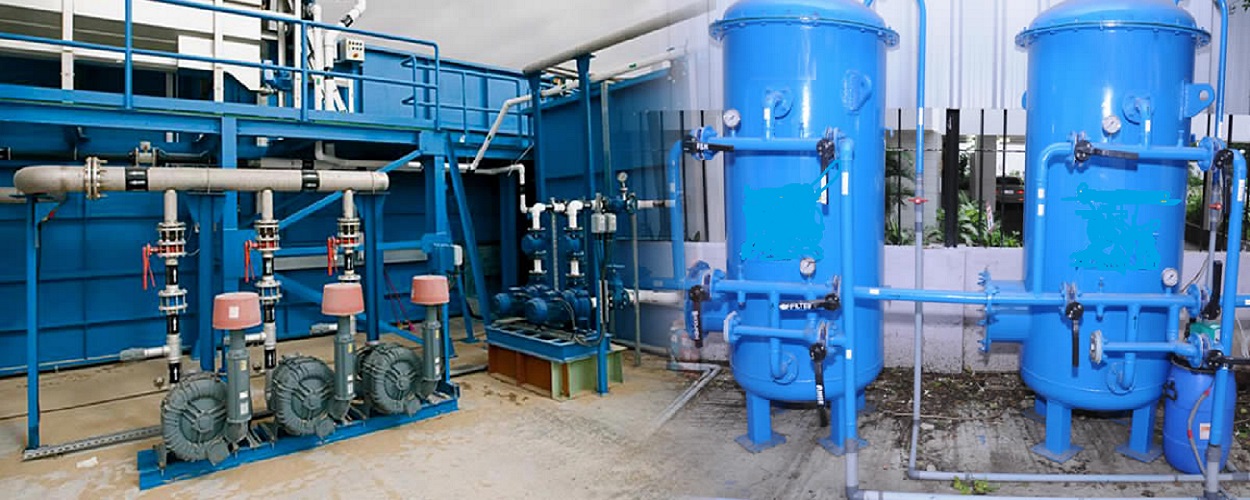
Packaged Sewage Treatment Plants
Treatment Process – Ecological concept
The Packaged Sewage Treatment commonly referred to as Decentralized Wastewater Treatment system which utilizes the biological comprehensive aeration principle of operation. This is similar to a variation of the Activated Sludge Treatment Process. This system operates by creating an environment with adequate oxygen levels and agitation to allow for bio-oxidation of the wastes to appropriate levels for discharge.
Waste material in domestic waste water is generally organic which means that microorganisms can use this matter as their source of food. 90% of the bacteria and other microorganisms are removed from the organic matter in the wastewater, with the use of a biological Wastewater Treatment System.
Biological Waste Water Treatment Systems and processes were actually developed by perceiving the nature. When the waste is entered into the stream, the dissolved oxygen content in the water is decreasing and the populations of bacteria are increasing. The bacteria would ultimately consume all of the organic materials, as when the waste moved downstream. Bacterial populations would then decrease, the dissolved oxygen in the stream would be replaced and the whole process would be repeated at the next wastewater discharge point.
Treatment Process Technical concept
The influent wastewater reaches the Wastewater Treatment Package Plant by passing through a bar screen for gross solids elimination. This is a step provides the mechanical reduction of solids prior to aeration. The untreated flow is mixed with an active biomass in a rolling action that takes place the length and width of the chamber in a slow forward progression, once the wastewater is moved in to the aeration chamber. This rolling mixing action is the outcome of air originating from air diffusers located along one side of the bottom of the tank. This insures that adequate mixing is maintained in the tank. The oxygen transfer achieved with the diffused air passing through the wastewater, coupled with the rolling action offers a sufficient oxygen supply allowing microorganisms to oxidize treatable wastes in to water, carbon dioxide &stable sludge. The chambers are filleted on each side along the bottom to assure and improve the rolling motion of the water and to dead zones elimination from the tank.
The wastewater flows to the clarifier that typically has a hopper bottom configuration, after the aeration. The Wastewater Clarifiers are in different sizes to provide the required retention time based on 24 hour design flow. The solids settle on the bottom of the clarifier during the settlement period. Airlift pumps with modifiable pumping capabilities are used to return these solids, as Activated Sludge, to the aeration chamber to sustain the maximum efficiency of the biological process.
When necessary, excess sludge is wasted to an aerated sludge digestion tank for extra treatment and reduction. A skimmer airlift pump is used to return floatable solids and scum to the aeration chamber for additional processing.
Then the treated water moves from the clarifier to a disinfection chamber for treatment via ultra-violet (UV) disinfection or chlorination prior to discharge for completing the treatment process. Tertiary filters may require where a higher quality of effluent is essential.
